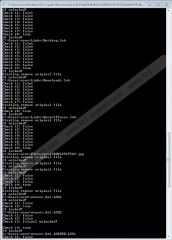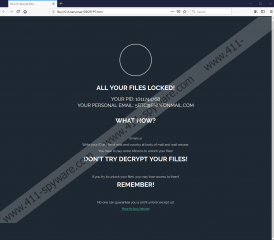GusLocker Ransomware Removal Guide
There are many reasons you should be careful when dealing with emails from unfamiliar senders, but GusLocker Ransomware is definitely one of them. It is a ransomware infection that encrypts most of the personal files, and then demands that you pay a ransom. Of course, paying the ransom is something you should never consider doing. Simply scroll down to the bottom of this description and use the manual removal instructions there to terminate GusLocker Ransomware for good. Should you have more questions about the matter, do not hesitate to address a professional. You may also need help with file recovery, too.
Although this infection comes from a group of similar programs, we do not know much about them. We are sure that these programs travel in spam email attachments. This means that the infection targets not only individual desktop users, but also corporate computer systems. After all, it is a lot more lucrative to infect a business computer system than a personal computer.
Therefore, users need to be extremely careful and wary when they receive emails with attachments. Although it is true that most of the spam emails get filtered into the Junk folder, some of them are so sophisticated they look like legitimate messages from individual people. So how to avoid this scam? You could avoid GusLocker Ransomware and many other ransomware infections by first, deleting suspicious messages from unknown senders, and second, by scanning all the file attachments with a licensed security tool. It might sound bothersome, but it would definitely protect you from a dangerous infection.
On the other hand, what happens when GusLocker Ransomware slithers into your system? Well, this program behaves just like any other ransomware infection out there. It scans the infected system looking for the file types it can encrypt. And it encrypts most of the common file formats. If you have text documents or pictures on your hard drive, you be sure that GusLocker Ransomware will lock them all up.
It doesn’t encrypt every single file, though. As far as we know, this infection skips Windows system folders and the Program Files folders. This means that your computer still functions even after the encryption. It also means that GusLocker Ransomware needs your computer to work if it intends to receive the ransom payment.
Do you have to transfer the payment though? Absolutely not. The ransom note that you see on your screen will tell you that your files will be destroy if you attempt decrypting them on your own. However, GusLocker Ransomware was released last year, and so the chances are that the program’s command and control center is down by now, and they cannot issue the decryption key. What’s more, there should be a public decryption key available.
Also, if you regularly back your files up on an external hard drive, you will have no problem deleting the encrypted data and then transferring the healthy copies back into your drive. On the other hand, even if you do not have the file backup, there are other file recovery options you can always try. Perhaps you have the most recent files on your mobile device. Maybe you have your library backed up on a cloud drive. Or maybe you have enabled the Shadow Volume copies without even realizing. To go through these options, you should enlist the help of a professional technician.
As for GusLocker Ransomware, you can remove it following the instructions below. If you do not wat to do it on your own, acquire a powerful security tool that will take care of this issue for you. It will delete GusLocker Ransomware and all the other unwanted or dangerous files it might find on your computer. Do everything you can to protect your computer and your data from malicious exploitation.
How to Remove GusLocker Ransomware
- Press Win+R and the Run prompt will open.
- Type regedit into the Open box and click OK.
- Go to HKEY_CURRENT_USER\Software\Microsoft\Windows\CurrentVersion\Run.
- On the right pane, right-click the inf value and choose to delete it.
- Press Ctrl+Shift+Esc and open the Task Manager.
- Click the Processes tab and highlight suspicious processes.
- Press the End Process button.
- Remove suspicious files from Desktop.
- Open the Downloads folder and delete the most recently downloaded files.
- Press Win+R and enter %TEMP%. Press OK.
- Delete the most recently downloaded files.
- Scan your system with SpyHunter.
GusLocker Ransomware Screenshots:


GusLocker Ransomware technical info for manual removal:
Files Modified/Created on the system:
| # | File Name | File Size (Bytes) | File Hash |
|---|---|---|---|
| 1 | c41174a8683089617e99695324703025140d0b705c4b345a24b0759b8971e187.exe | 430080 bytes | MD5: 5b58ccbb150683d0608c236f242abc90 |
Memory Processes Created:
| # | Process Name | Process Filename | Main module size |
|---|---|---|---|
| 1 | c41174a8683089617e99695324703025140d0b705c4b345a24b0759b8971e187.exe | c41174a8683089617e99695324703025140d0b705c4b345a24b0759b8971e187.exe | 430080 bytes |

